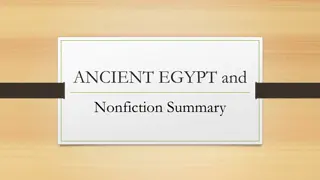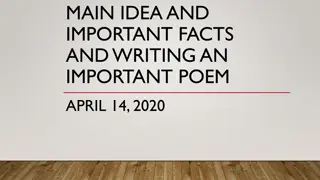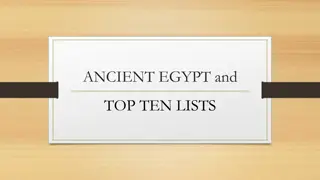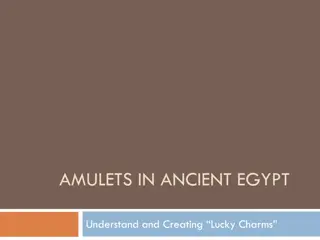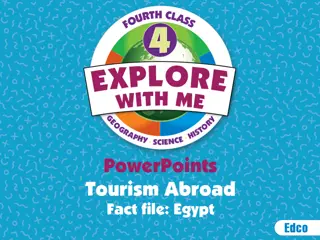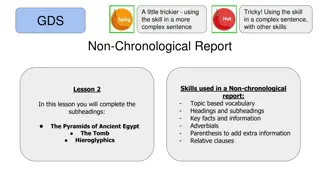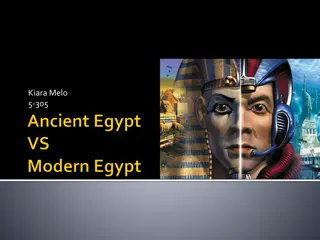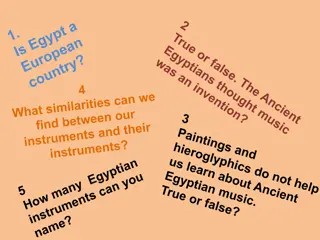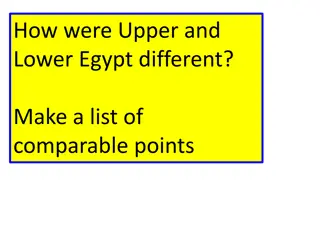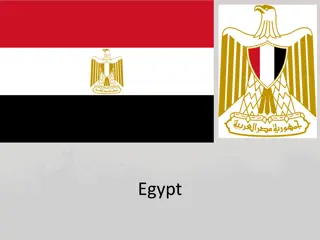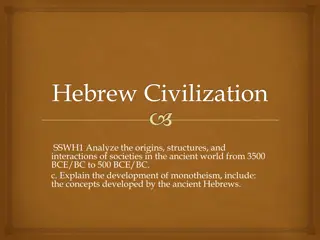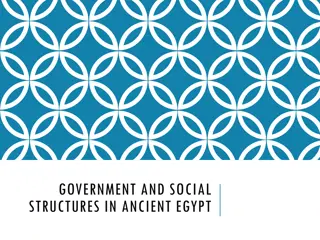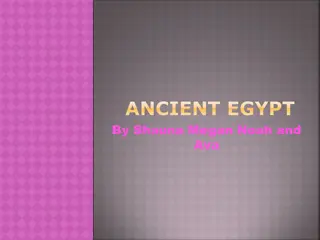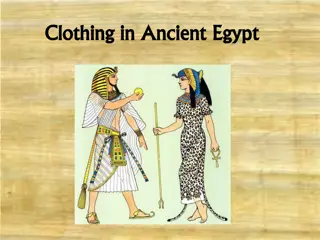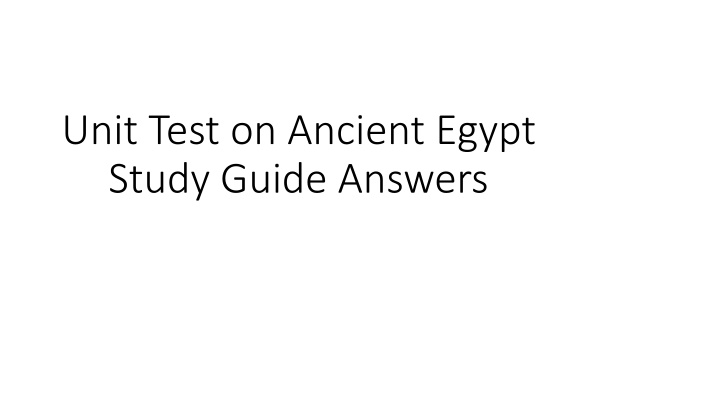
Ancient Egypt Study Guide: Interesting Insights & Answers
Explore insightful answers to key questions on Ancient Egypt study guide, touching on topics like the importance of Nile River, hieroglyphs, King Tut, mummies, and pyramids. Uncover fascinating details about ancient Egyptian civilization in this informative study guide.
Download Presentation

Please find below an Image/Link to download the presentation.
The content on the website is provided AS IS for your information and personal use only. It may not be sold, licensed, or shared on other websites without obtaining consent from the author. If you encounter any issues during the download, it is possible that the publisher has removed the file from their server.
You are allowed to download the files provided on this website for personal or commercial use, subject to the condition that they are used lawfully. All files are the property of their respective owners.
The content on the website is provided AS IS for your information and personal use only. It may not be sold, licensed, or shared on other websites without obtaining consent from the author.
E N D
Presentation Transcript
Unit Test on Ancient Egypt Study Guide Answers
1. Because one physical feature was so vital to ancient settlers of Egypt, where did they decide to build their houses?
2. How did the yearly flooding of the Nile River affect the people of Egypt?
Pros the floods brought rich soil in which to plant crops and the river was used to irrigate the crops Cons the floods could destroy crops, houses, and people would sometimes drown
3. List the names of two types of vegetation that were used in the creation of hieroglyphs
Papyrus - to make paper reeds to use as pens
4. Why is King Tut one of the most well- known pharaohs?
When his tomb was discovered his mummy and artifacts were still intact, giving archaeologists a lot of information about life during ancient Egypt
They made mummies to preserve their bodies to have a long afterlife
6. What was the major purpose for building the pyramids?
The pyramids were the tombs for the pharaohs who had died.
7. What was one method Khufu used to ensure that his power would be accepted?
8. It was built from more than 2 million stone blocks. It had tunnels inside. What was it?
9. Senusret I controlled a source of natural resources that were used in beautiful works of art. What was the source? (Where did he get the gold and gems to make the jewelry and other items?)
10. Which pharaoh did the following: A. built the great pyramid B. was the first woman pharaoh? C. loved the arts and had the White Chapel built? D. ruled for 67 years and made the world s first peace treaty?
A. Khufu B. Hatshepsut C. Senusret I D. Ramses II
11. Why are the social classes of Egypt shown in the form of a pyramid/triangle?
The social classes show the amount of power and people in each class. The person at the top was the one pharaoh and he had the most power. The peasants were at the bottom because they had no power and the population was mostly peasants.
12. Who built the giant temples of the pharaohs?
13. What did the Egyptians put in the tombs of the people who died? Why?
They put their mummy, food, gold, furniture, their pets, games, jewelry, clothes, and anything they might need in their afterlife.
14. How did archaeologists figure out what the hieroglyphs meant?
The Rosetta Stone was the key to decoding hieroglyphs.
It took many years to become a scribe bc there were over 700 hieroglyphs to learn and memorize
They wrote on papyrus which was a type of plant
17. Rank the order of the social classes from most important to least important.
Pharaoh Government officials, priests, nobles Scribes Merchants and artisans Peasants, farmers, and slaves
They made stone pottery, statues, jewelry, dinner ware, tools, weapons, sarcophagus, furniture, musical instruments, decorated tombs
18B. Why do archaeologists study these objects today?
These items give clues about what life was like in ancient Egypt
19. For a community to be considered a civilization, it needs to have the following seven characteristics:
1. government 2. stable food supply 3. religion 4. social structure 5. culture and arts 6. technology 7. written language
20. Into which characteristics does each of the following examples fit? 1. sacrcophagus 2. calendar 3. hieroglyphs 4. artisans 5. pharoah
1. religion, art 2. technology 3.writing, art 4. social class, art, technology 5. government, social class
Vocabulary 1. social class- group in a society that is ranked by factors such as wealth, property, and rights. 2. afterlife an existence after death 3. embalm a method that preserved bodies from decay.
Vocabulary 4. treaty a written agreement by which two or more states agree to peaceful relations 5. peasant a person who does farm work for wealthy landowners

![[PDF⚡READ❤ONLINE] Tutankhamun's Trumpet: Ancient Egypt in 100 Objects from the](/thumb/20549/pdf-read-online-tutankhamun-s-trumpet-ancient-egypt-in-100-objects-from-the.jpg)
